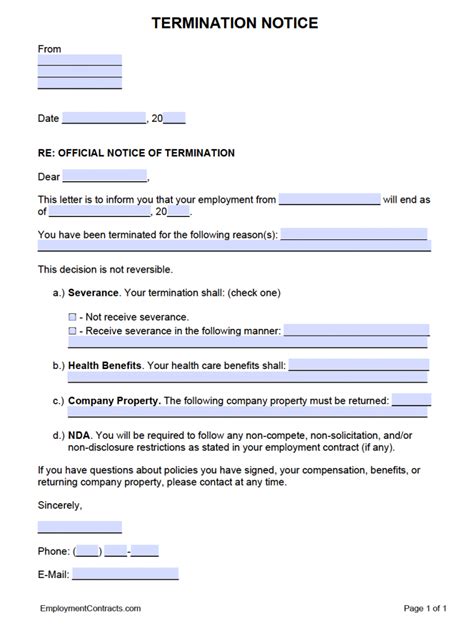Employer's Disclosure Of Termination

Termination of employment is a difficult situation for both the employer and the employee. Employers have a responsibility to inform their employees about the reasons behind the termination. This is called employer’s disclosure of termination. In this article, we will discuss what employer’s disclosure of termination is, why it is important, and how to do it the right way.
What is Employer’s Disclosure of Termination?
Employer’s disclosure of termination is the process of informing an employee about the reasons behind their termination. This includes the reasons for the termination, the timeline for the termination, and any severance pay or benefits that the employee is entitled to. Employers are legally required to provide this information to their employees.
Why is Employer’s Disclosure of Termination Important?
Employer’s disclosure of termination is important for several reasons:
- Transparency: It is important for employers to be transparent about the reasons behind the termination. This helps employees understand why they are being terminated and can help prevent any misunderstandings or miscommunications.
- Legal Compliance: Employers are legally required to disclose the reasons for termination to their employees.
- Morale: Providing clear and honest information about the reasons for termination can help maintain employee morale and prevent negative attitudes towards the company.
How to do Employer’s Disclosure of Termination the Right Way
Here are some tips for employers on how to do employer’s disclosure of termination the right way:
1. Plan Ahead
Before terminating an employee, it is important to plan ahead and prepare for the disclosure of termination. This includes gathering all necessary information about the termination, such as the reasons behind it, the timeline, and any severance pay or benefits that the employee is entitled to.
2. Schedule a Meeting
Once you have all the necessary information, schedule a meeting with the employee to discuss the termination. This meeting should be conducted in person and in private.
3. Be Direct and Honest
When discussing the termination with the employee, be direct and honest about the reasons behind it. Provide specific examples and avoid vague or general statements.
4. Listen to the Employee
During the meeting, listen to the employee’s concerns and questions. Be open and receptive to their feedback.
5. Provide Resources
After the meeting, provide the employee with resources to help them during the transition period. This may include information about unemployment benefits or job search resources.
6. Follow Up
Follow up with the employee after the meeting to ensure that they have all the necessary information and resources. This can help ease their transition and maintain a positive relationship with the company.
FAQs
What information should be included in employer’s disclosure of termination?
Employer’s disclosure of termination should include the reasons for the termination, the timeline for the termination, and any severance pay or benefits that the employee is entitled to.
Can an employer terminate an employee without disclosing the reasons?
No, employers are legally required to disclose the reasons behind the termination to their employees.
What are some common reasons for termination?
Some common reasons for termination include poor job performance, misconduct, violation of company policies, and downsizing or restructuring.
What resources can employers provide to employees after termination?
Employers can provide resources such as information about unemployment benefits, job search resources, and counseling services.
Can an employee sue their employer for wrongful termination?
Yes, an employee can sue their employer for wrongful termination if they believe they were terminated for illegal reasons, such as discrimination or retaliation.
Conclusion
Employer’s disclosure of termination is an important process that helps maintain transparency, legal compliance, and employee morale. By planning ahead, scheduling a meeting, being direct and honest, listening to the employee, providing resources, and following up, employers can ensure that the termination process is handled in a professional and respectful manner.
